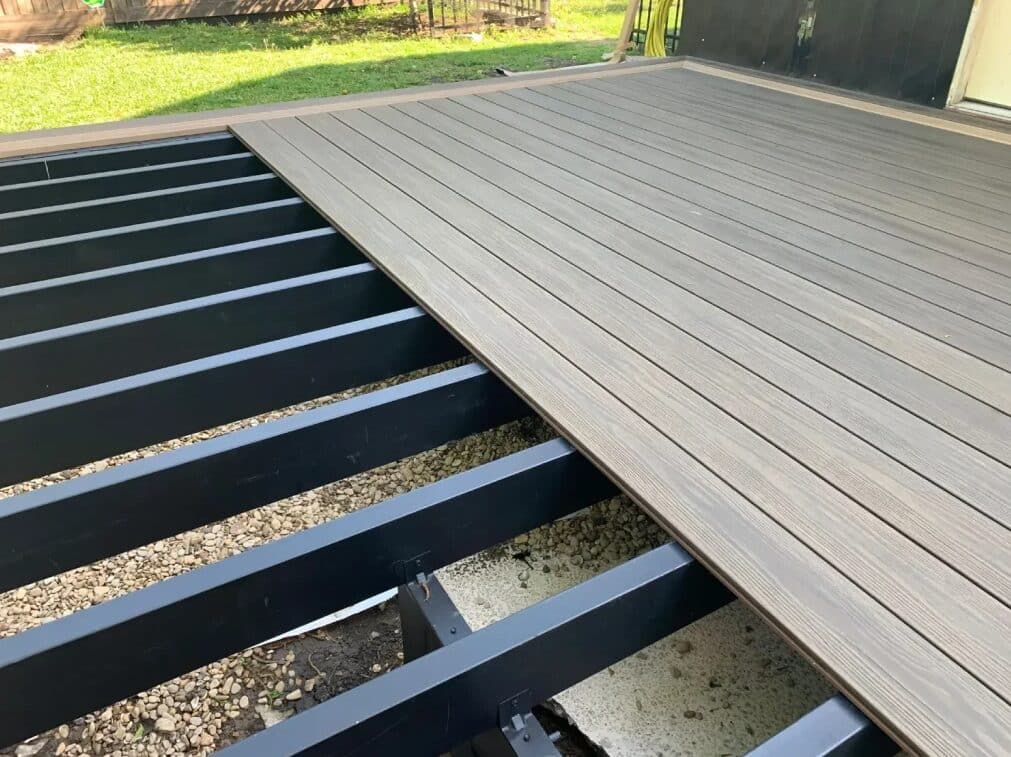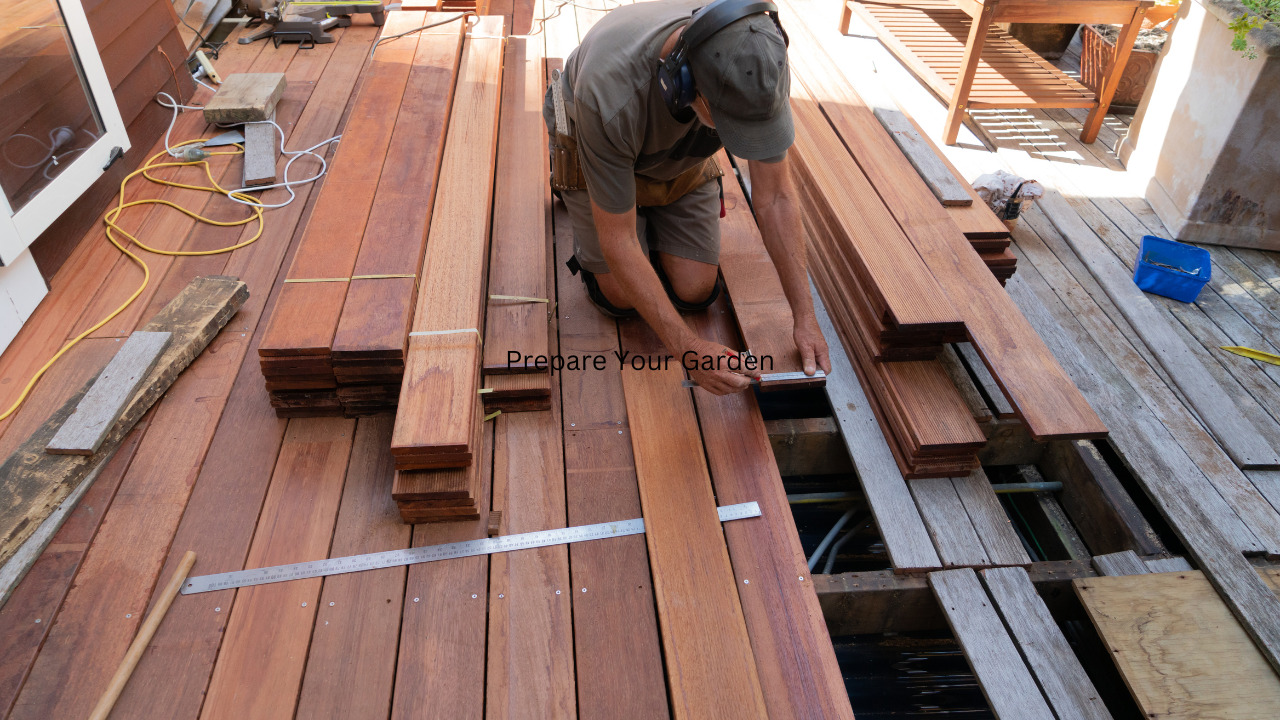Water-resistant Ultra decking composite board Composite decking can be built in areas with much dampness. Because of its water resistance, several homeowners even put composite decking near their swimming pool. Is it possible to submerge composite decking in water because it is water-resistant?
Standing water will not harm your capped composite deck boards the way they would traditionally wood. There’s no need to worry about mold, mildew, or rot with composite decking because it’s water-resistant.
Decks have the advantage of being positioned on the water, which implies boat time. The disadvantage of docks is that they are placed near water, exposing the decking to much dampness.
Table of Contents
Composite Decking: An Overview
Composite decking is a type of flooring. Composite boards can be used to create decking in your outside space. When compared to other decking materials, composite decking is a smart choice.
Composite decking is made from a combination of Future wood fibers, recyclable polymers, and bonding agents. The mixture is heated then cooled before being formed into composite decking.
Aside from that, composite decking is extremely long-lasting and weatherproof. It’s also waterproof and moisture-resistant. In a damp environment, composite decking can survive.
The capped composite decking will not swell or absorb water when installed in a moist environment. Composite decking is water-resistant due to the plastic substance used in its construction.
Composite decking outperforms wood decking, which is prone to water damage. Wood is quickly soaked by water. In contrast to composite boards, which reject water, they can swell and decay with time. Composite board manufacturers market water-resistant composite decking.
Is It Safe To Use Composite Decking Inside?
Although composite decking boards aren’t often utilized indoors, they can be used as interior flooring. Concerns about a strong base in composite decking’s outdoor use must be solved for inside use, but otherwise, composite decking can be installed anywhere.
Our recommended treatment is calcium chloride-based ice melt, suitable for composite decks. Don’t prime it if you want to stain the deck instead of painting it. Use a high-quality satin or semi-gloss latex floor and deck paint for painting. Use a high-quality acrylic latex solid color deck stain designed for composite decking for staining.
How To Choose A Waterproof Composite Decking?
There is a significant difference between a water-resistant and a waterproof substance. Water-resistant materials can withstand water penetration. To some extent, although not totally, such material will resist water penetration. Similarly, composite decking is water-resistant because water cannot easily infiltrate the decking.
Water will not quickly penetrate a composite decking board if it is placed near a dock or by a pool. Such material will not absorb water when fully immersed in a pool or pond, unlike waterproof material. The distinctions between the two can now be seen. Although water cannot easily permeate a water-resistant material, it can absorb water when entirely submerged. On the other hand, a waterproof substance will not absorb water even if submerged deeply.
Composite Deck Doesn’t Absorb Rain Water
Your composite decking will not absorb water if it rains on it. Water can easily flow off the decking due to the spaces between the boards. The composite decking’s plastic nature also makes it easy to repel water.
As a result, rainwater does not absorb into the composite decking. A composite board can be installed in a damp location without absorbing water from the air.
Composite Deck Doesn’t Submerge In Water
Because composite decking is water-resistant but not waterproof, it doesn’t submerge in water. Composite decking cannot be submerged in water. The term submerged refers to the composite board being completely submerged in water. If you put a composite board within the water, it will only reject water, but it will absorb it.
On the other hand, no composite decking board can be submerged in water without collecting moisture. Capped composite decking, on the other hand, is water-resistant. Rainwater can be repelled off the decks. When submerged in water, the capped decking absorbs a small amount.
Is It Okay To Paint Composite Deck?
Composites aren’t supposed to be as paintable as natural wood planks, but they can receive paint if the deck is properly cleaned, sanded, and primed. After that, a coat of porch paint may restore the attractiveness of your deck while also extending its life by several years.
Small amounts of the releasing agent used during the forming or molding process may be present in some composite trim, interfering with paint adhesion. After priming with a mildew-resistant exterior primer, composite trim should be coated with two coats of exterior acrylic latex paint.
Final Thoughts
Rainwater can be repelled by composite decking. However, when composite decking is submerged in water, it absorbs the water. Although the capped composite board has a high-water resistance, it will absorb only a small amount of water if submerged in water.





